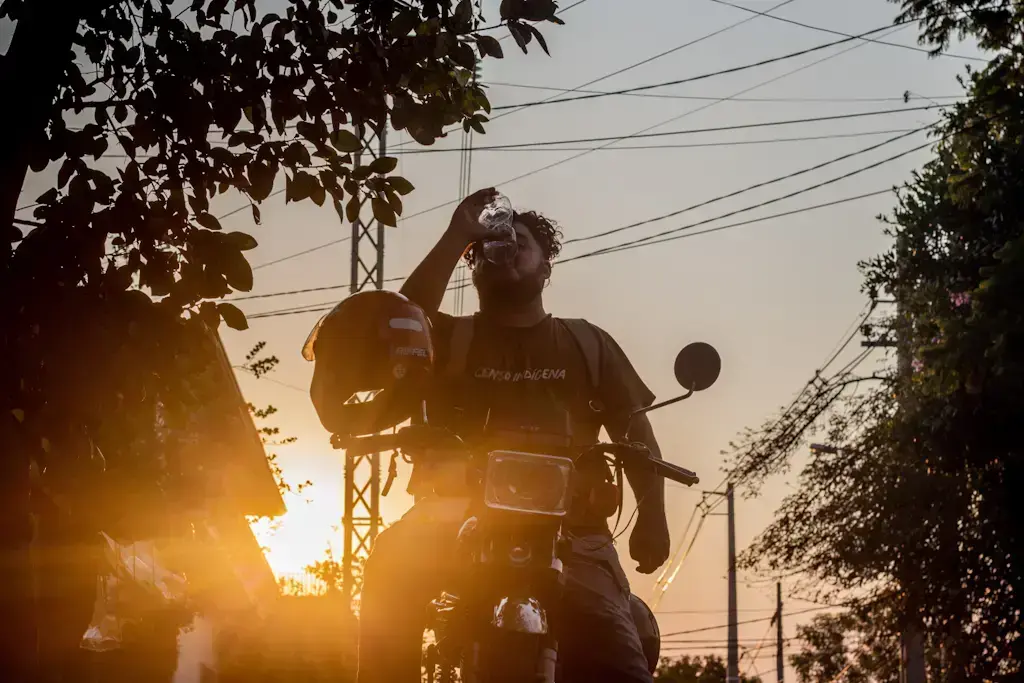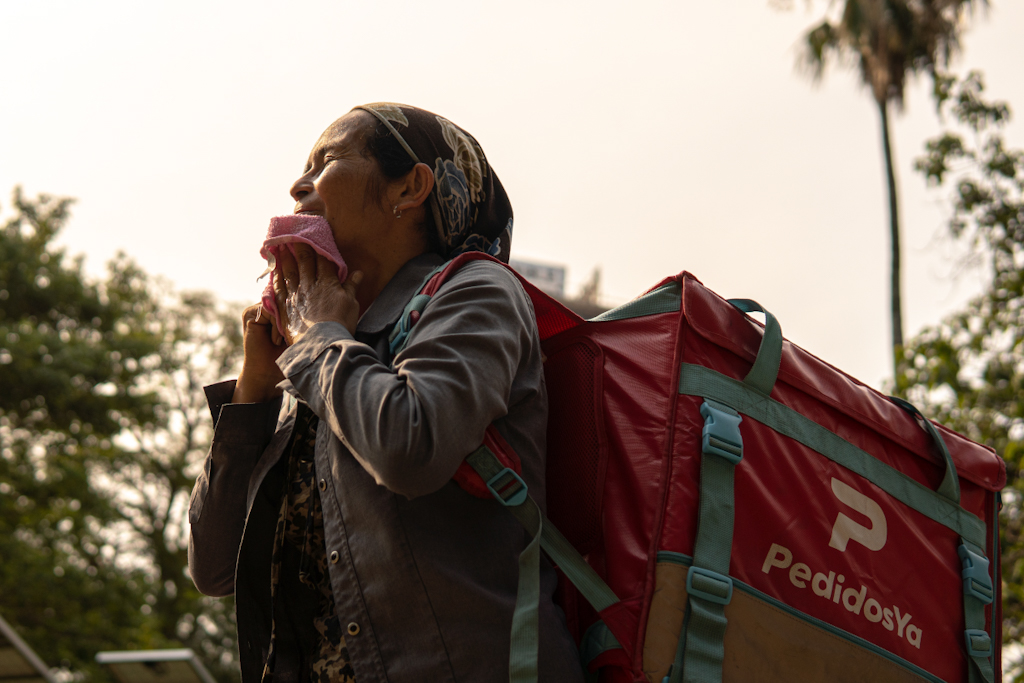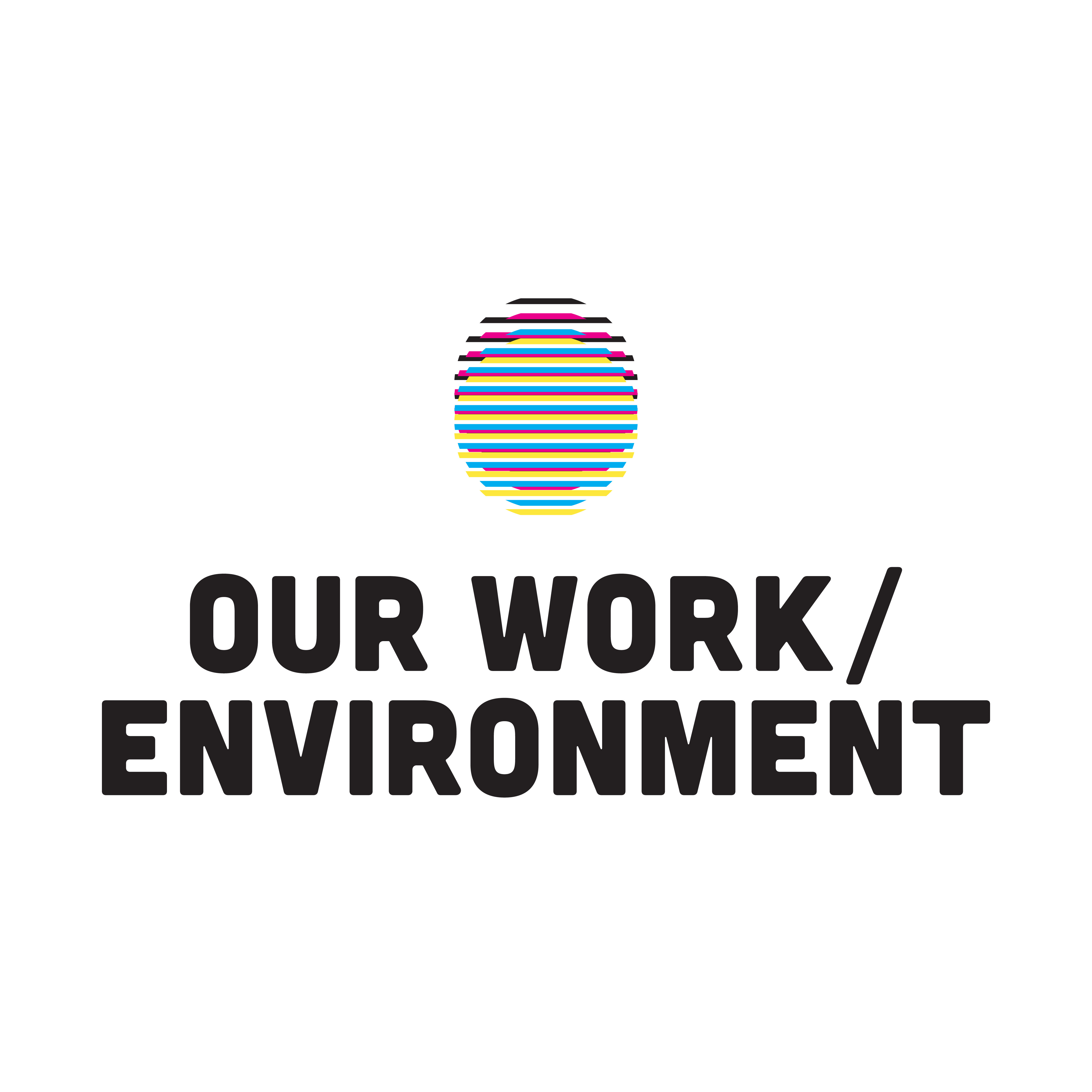Independent media outlet El Surti of Paraguay has dedicated a significant part of its coverage in recent years to climate change. From covering activities behind the scenes at the COP28 climate summit and investigating the increase in fuel stations in Asunción, to its most recent work on the effects of rising temperatures on workers.
The report titled 'El trabajo en riesgo ante un calor que no es normal’ (Work at risk in the face of heat that is not normal) was based on an experiment with delivery workers in Greater Asunción, Paraguay, to reveal risks they face due to increased temperatures aggravated by the climate crisis. It was published last November after eight months of investigation.
In 2022, Paraguay experienced an unusual heat wave with temperatures above 106.7 °F in the shade. As explained in the report, in the last 40 years, the average heat wave in Paraguay increased three times, and there is evidence that links its likelihood to the climate crisis.

As a nonprofit journalism organization, we depend on your support to fund more than 170 reporting projects every year on critical global and local issues. Donate any amount today to become a Pulitzer Center Champion and receive exclusive benefits!
“We strive to reveal who is responsible for this global crisis, their disinformation narratives and possible solutions. And in general we try to ensure that the information we publish connects with our audience, from the choice of publication formats to the angle of the stories,” Jazmín Acuña, editor of this project and editorial coordinator of El Surti, told LatAm Journalism Review (LJR).
For Acuña, focusing the investigation on motorcycle delivery drivers, who became essential during the COVID-19 pandemic, came about for two reasons.
First of all, delivery drivers are an emerging workforce in Paraguay, “eminently young and urban, both characteristics shared with those who make up our audience. In fact, we know that those who read us not only use the delivery service. Among them, some have found a job opportunity and a source of income in this profession,” Acuña explained.
Secondly, for the El Surti team, the impact of heat on trades such as construction and agriculture has been covered more, but not so much the effects of high temperatures on new labor markets such as the so-called gig economy.

Collaboration with the scientific academy
El Surti published this project in alliance with América Futura from El País and had the support of the Pulitzer Center, both of whom have been actively supporting journalistic investigation in Latin America.
Thanks to the advice of Pulitzer Center editor Christine Spolar, the El Surti team contacted scientist Andreas Flouris, a world leader in studies about heat in labor contexts, and they were able to carry out the scientific experiment guided by his methodology.
“Working with Jazmín Acuña was a wonderful experience! We were able to design a robust investigation on the topic of heat stress for workers. Journalists have a very good sense of what is important to address and what not, as they are very much in contact with society,” Flouris told LJR.
The experiment was carried out with five volunteer delivery drivers for seven days in the months of February and March 2023, two months after the December heat wave in Paraguay. Monitors were placed on each person's torso to record whether their core body temperature increased on their runs.
“We take other data from the measurement days such as the heart rate of the delivery people and the weather conditions. The team recorded all of this information in a database we built in Airtable for subsequent analysis. The monitors showed that the core temperature of the delivery drivers increased in all cases at times, but one delivery woman reached a temperature that is considered mild hyperthermia, when the temperature rises in such a way that the body loses the capacity for thermoregulation,” Acuña said.
The data work for this investigation was not limited to measurements with the delivery drivers. According to Acuña, they also worked with data from Paraguay’s Weather Service to calculate the wet bulb temperature index, a value that evaluates the danger to health when exposed to heat.
In turn, they took data on temperature, relative humidity, wind speed and radiation on the same days that they monitored the delivery workers' routes.
“Thanks to a calculator from the Heat-Health Organization, we found that delivery drivers were exposed to high risk and extreme risk to health due to heat. For example, the day a delivery girl suffered mild hyperthermia, she was exposed to these risk indices. Dr. Flouris also told us that the radiation exceeded levels considered high. With these levels of radiation and high temperatures, the delivery drivers feel, as the professor told us, 'as if a hair dryer is turned on their face. For hours,'” Acuña said.

Challenges during the investigation
The report also included a review of scientific literature, requests for public information, interviews with delivery workers and specialists, mapping of legislation and other actions in the region regarding heat protection in work.
But, the El Surti team said the most demanding part of carrying out the investigation was, without a doubt, the implementation of the experiment.
On the one hand, they had to build trust with the delivery workers. To achieve this, they found it essential to work with the union. The investigators also had to deal with certain weather conditions (such as rain), or the availability of delivery drivers to participate in the measurement days.
“It was very challenging to match them with the times and places they could do, since they are on the street all the time and do not have a check-in or check-out time. We got 13 of the delivery drivers to answer an extensive questionnaire, 10 of them to give us in-depth interviews and five participated in the experiment,” Romina Cáceres, El Surti reporter, told LJR.
In the report itself, the journalists clarify that Flouris recommended that they carry out the same process more times to consolidate the data and draw better conclusions.
“The issue of workplace heat stress is extremely important! Millions of people all over the world are exposed to heat stress at work every year, with many of them experiencing heat-related disorders that [are not] undocumented. It has been very encouraging to see that the media has started to pay attention to this issue, but we really must do a lot more to protect workers,” Flouris told LJR.
This report has been well received by the Paraguayan public. The journalists presented the findings of the investigation to representatives of the Ministries of Labor and Health, delivery drivers, two legislators, as well as members of their audience, such as doctors and urban planners. This is in order to allow an exchange of concerns as well as encourage taking action.
“We received comments from workers in different sectors about how the heat affects them in their work, other media began to talk about thermal stress,” Cáceres said. “And for the first time, the Ministry of Labor published recommendations aimed at employers and employees in the face of extreme heat days, remembering that there is regulation in this regard.”













